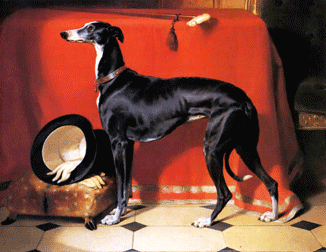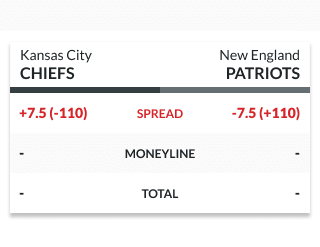Point Spread Betting Rules
Point spread betting is the most popular form of sports betting. The vast majority of sports wagers use a point spread thanks to the popularity of football and basketball. Even though this type of betting is so popular, it may take awhile to understand.
The point spread is sometimes known as an equalizer for sportsbook operators. All teams aren’t created equally, so sportsbooks can create a point spread for a game so that each team playing has an almost even chance of winning the game. In a way, the point spread will even the field for both teams.
If the final score is Dallas 12, Pittsburgh 6, when we adjust for the POINT SPREAD, the final score becomes 12-12 (Dallas 12, Pittsburgh 6 + 6 = 12). This effectively results in a tie and the “PUSHED”. Rules for Point Spread Betting When placing a spread bet, the odds you take at that time are the odds that are used to determine your payout. Point spreads are either whole numbers, or they can.
The point spread gives a reason for bettors to risk money on both teams. The better team playing in the game is considered favorite. They have to win by the point spread offered by the sportsbook. The favorite in a game is listed as being minus (-) the point spread.
When betting the spread, you are essentially betting on a player to perform as well as expected or better. The spread acts as a kind of handicap to even the odds, literally. Spread bets pay close to even money. Games lasting under 55 minutes constitute 'No Action' or 'Push/Cancel' and the bet will be void. However, if quarters are completed that constitutes action on quarters. 3.-Betting on the game period.
The worse of the teams playing in the game is called the underdog. The bettor wins if this team wins the game outright or loses by an amount smaller than the point spread. The underdog in a game is listed as being plus (+) the point spread.
Let’s use this past Super Bowl between the Tampa Bay Buccaneers and Kansas City Chiefs as an example.
Using this example, the Chiefs were 3-point favorites over the Buccaneers. The Chiefs needed to win by 4 or more points to cover the spread.
Likewise, the Buccaneers were 3-point underdogs. That means the Buccaneers needed to win the game outright or not lose the contest by 4 points or more. At Chiefs -3, if they won by exactly 3 points, the betting result would have been a “push” and bettors for both sides would have gotten their wagers refunded.

Point Spread Betting Explained
The Buccaneers pulled off the upset, winning by a score of 31-9, and rewarded bettors who backed them at +3.
Point spread betting odds
Point spreads are usually set with -110 odds, but pricing often fluctuates at online sportsbooks. This is the sportsbook operators’ house edge. The odds guarantee the sportsbook operator will see a little money over time. When the odds are set at -110, the bettor must wager $110 to win $100 (or $11 to win $10).
The odds on a point spread are most commonly known as the vigorish or “vig” for the sportsbook. You might hear this small profit margin for the sportsbook called the “juice” by some sports bettors.
Point spread FAQs
What does ‘pick em’ or ‘pick’ mean in NFL betting?
A “pick em” (sometimes seen as “pick”) is when the teams have a point spread of zero, meaning neither team is favored. In this instance, you’re essentially picking moneyline and your bet will be determined on the winner alone.
What does -7 and +7 mean in NFL betting?
A spread of minus-seven (-7) means that a is favored to win the game by a touchdown (technically, a touchdown and the extra point). A team favored by -7 must win the game by eight or more points to win the bet. If the team wins by seven, the result is a “push” and the bet is refunded.
A spread of +7 means the team must win the game or lose by fewer than seven points to win the bet. A loss by seven would result in a push.
What does -3 and +3 mean in NFL betting?
Point Spread Betting Rules
A -3 spread means that the favorite must win by more than a field goal to win the wager. A three-point win would result in a push and the sportsbook would refund the wager.
A spread of +3 means the team listed as the underdog must win the game or lose by fewer than three points to cash the bet. A three-point loss would be graded as a push by the sportsbook and the bet would be refunded.
Why are point spreads in the NFL so much lower than in college?
In 2019, the Baltimore Ravens led the NFL in point differential per game at +13.7 points; the Miami Dolphins ranked last in the NFL in point differential per game at -11.7. Even Kansas City– known for their explosive offense– had an average point differential in 2019 of just 9.7 points. The net point differential in the NFL is -14.1, or -0.9 points per game. Basically, the talent differential in the NFL is so minute that even mismatched teams often draw games within a score of each other.
NFL spreads are most commonly between one point and four, with six being a heavy favorite and extremes coming out around 15-20 point favors. (For those wondering, the 1941 Chicago Bears hold the NFL record of point differential at +15.7 points per game. Conversely, Ohio State had a +33.1 average point differential in 2019.)
Point spread and odds movement
Sportsbook operators often aim to have equal money on both sides of a point spread. When the money is exactly split the sportsbook operator will see the exact vigorish as their profit margin. If all things are equal over time this will maximize how much money the sportsbook operator can make.
In an effort to have equal money on both sides of a wager, the sportsbook operator will move the point spread to attract money on the side that customers aren’t betting on. The odds for a point spread might change before the actual point spread. There are certain point spread numbers, like 3 and 7 in football, the sportsbook operators would like to avoid moving away from since the final score margin falls on these two numbers most often.
For example, if a lot more money is wagered on the New England Patriots -3, the vig may shift from -112 to -115 and -120 before the line moves to -3.5.
Run and puck lines
Football and basketball games are mostly bet using a point spread. The less popular major sports, baseball and hockey, are mostly bet using a moneyline. In an effort to make baseball and hockey more appealing to point spread bettors, the sportsbook operators offer run and puck lines, respectively.
These alternative lines give point spread bettors a chance to wager on other sports using a more familiar method of betting. Since points (runs and goals) aren’t as easy to come by in baseball and hockey, the odds with the lines may have a wider spread than a football or basketball game.
How Proline NHL Point-Spread Betting Works
Typically hockey is not a popular sport when it comes to point-spread betting because most games are decided by only a goal or two. Sports like football and basketball are better for point-spread betting mainly because they are higher scoring sports. However, Proline does offer NHL point-spread betting and it can get confusing so let’s take a look at how it works.
Proline will set a point spread for each game of either -0.5 / +.05, -1.0 / +1.0, or -1.5 / +1.5. If you choose -0.5 the team must win by 1 goal or more to win your wager. If you choose +0.5 your team must win or tie the game. Note that OLG Proline includes the shoot-out for point spreads so there are never any ties for the -0.5 / +0.5 spreads. If you choose the -1.0 spread your team must win by 2 or more goals to win the bet. If they win by 1 goal exactly it is a push. If you choose the +1.0 spread your team must win the game by 1 or more goals. If they lose by 1 goal it is a push. If you choose the -1.5 spread your team must win by 2 or more goals. If you choose the +1.5 spread your team must win the game, tie, or lose by 1 goal to win the bet.
OLG Proline in Ontario and WCLC Sport Select in Western Canada offer NHL point-spread betting but they have different rules. ALC Proline in Atlantic Canada offers puckline betting and 3 way NHL regulation-time betting.
OLG NHL Proline Point Spread Rules
You can choose between 2-12 outcomes.

Overtime and the shoot-out does count for NHL point-spread results in Ontario. Whenever you see a game -0.5 essentially both teams have a spread of -0.5 and your team has to win the game for you to win the bet. Lately there have been more -1.0 / +1.0 NHL spreads in Ontario. If you choose the -1.0 spread and the game goes to overtime you cannot win the bet. You can only push the bet if your team wins in overtime or the shoot-out. Conversely, if you choose the +1.0 spread and the game goes to overtime you cannot lose the bet but will push the bet if your team loses in overtime or the shoot-out.
You cannot mix sports with Proline point-spread betting. All point-spread picks must be for the same sport. Bodog Canada allows point-spread betting between multiple sports.
A tie reduces the payout. For example, if you pick a 5 game point spread and pick 4 games correctly with 1 tie your ticket will pay 10x your wager insread of 20x your wager.

Did You Know?
12 of 12 correct point-spread picks only pays 1,000 to 1 on OLG Proline.
Bodog Canada pays more than 2,000 to 1 for 12 of 12 correct point-spread picks.
Plus, Bodog Canada allows you to combine point-spread bets on multiple sports.
WCLC Sport Select NHL Proline Point Spread Rules
You can choose between 2-12 outcomes.
Overtime counts but the shoot-out does not count in Western Canada for NHL point-spread betting. If you choose the -0.5 spread your team must win before the end of overtime. If you choose the +0.5 spread your team must win the game or be tied after the end of overtime to win the bet.
You cannot mix sports with Proline point-spread betting. All point spread picks must be for the same sport. Bodog Canada allows point-spread betting between multiple sports.
A tie reduces the payout. For example, if you pick a 5 game point spread and pick 4 games correctly with 1 tie your ticket will pay 8x your wager insread of 15x your wager.